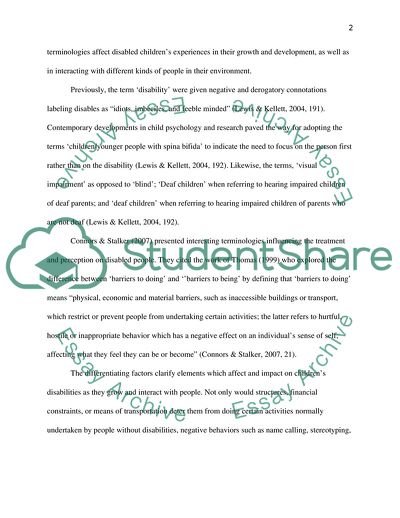Cite this document
(Childrens Experiences of Childhood Research Paper, n.d.)
Childrens Experiences of Childhood Research Paper. Retrieved from https://studentshare.org/psychology/1740408-what-is-the-impact-of-disability-on-childrens-experiences-of-childhood-you-should-explore-this-question-by-critically-evaluating-a-minimum-of-four-studies-your-answer-must-draw-on-at-least-two-journal-articles-other-than-the-course-materials
Childrens Experiences of Childhood Research Paper. Retrieved from https://studentshare.org/psychology/1740408-what-is-the-impact-of-disability-on-childrens-experiences-of-childhood-you-should-explore-this-question-by-critically-evaluating-a-minimum-of-four-studies-your-answer-must-draw-on-at-least-two-journal-articles-other-than-the-course-materials
(Childrens Experiences of Childhood Research Paper)
Childrens Experiences of Childhood Research Paper. https://studentshare.org/psychology/1740408-what-is-the-impact-of-disability-on-childrens-experiences-of-childhood-you-should-explore-this-question-by-critically-evaluating-a-minimum-of-four-studies-your-answer-must-draw-on-at-least-two-journal-articles-other-than-the-course-materials.
Childrens Experiences of Childhood Research Paper. https://studentshare.org/psychology/1740408-what-is-the-impact-of-disability-on-childrens-experiences-of-childhood-you-should-explore-this-question-by-critically-evaluating-a-minimum-of-four-studies-your-answer-must-draw-on-at-least-two-journal-articles-other-than-the-course-materials.
“Childrens Experiences of Childhood Research Paper”. https://studentshare.org/psychology/1740408-what-is-the-impact-of-disability-on-childrens-experiences-of-childhood-you-should-explore-this-question-by-critically-evaluating-a-minimum-of-four-studies-your-answer-must-draw-on-at-least-two-journal-articles-other-than-the-course-materials.


